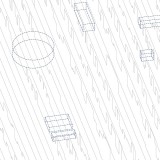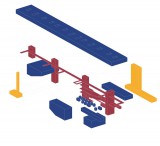Supervisors:
2020
The transition from the immured form of Ottoman town of Volos to its open urban expression includes a series of reforms and ruptures that have occurred following social upheavals, economic changes, population fluctuations and natural disasters. The present thesis attempts to propose continuity where continuity does not exist, to unveil a new evolutionary path that will enhance the urban tissue of the town of Volos and may even be able to refigure it. For this reason, the network of the city's public program is explored through the recording of all its public buildings as the primary center of urbanism. The city's public program is treated as a unit whose rooms, small volumes, occupy several tens and thousands of square meters. This research identifies its concentration zones, while assessing and planning the city's void, through city’s form and its structural conditions. These gaps, whether designed or arising after the removal of structured space, create a kind of discontinuity in urban fabric, affect the flow of the city and are sites of potential social action.
The axis of El. Venizelou st., with its inner concentration of public program and gaps, is considered the main research area of this thesis. On intensifying its public nature, the vacant section on 28th October - Dimitriados and PB Mellas - El. Venizelos is selected for the creation of a multi-program building that will take advantage of the vacancy opportunities of the city and accept uses for the student community. The design varies between different scales of spaces and programs regarding the modalities of congestion and sizes of public buildings in a medium sized Greek city, defining an urban continuity.





